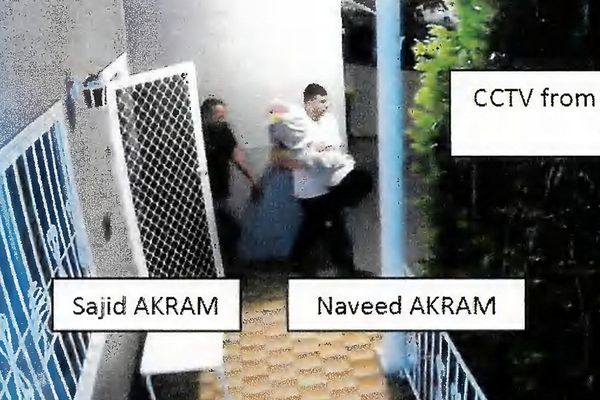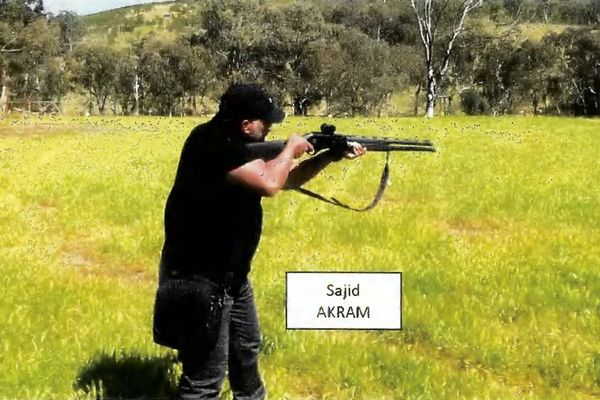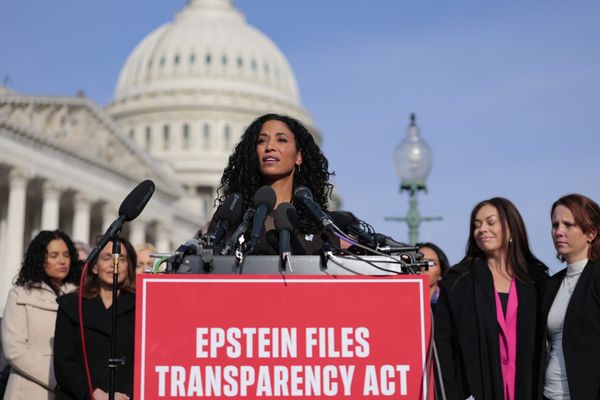
An Israeli airstrike has killed at least 10 people, including six children, who were waiting to collect water in Gaza, Palestinian health officials have said.
A separate airstrike on Sunday hit a home, killing nine people, and 31 others were shot dead near an aid distribution site on Saturday, marking another bloody weekend as the conflict’s death toll exceeded 58,000.
Witnesses said a drone fired a missile at a crowd holding empty jerry cans beside a water tanker in the Nuseirat refugee camp in central Gaza. About 20 children and 14 adults were lined up when the strike occurred, Ramadan Nassar, who lives in the area, told the Associated Press. Al-Awda hospital received 10 bodies, including six children, health officials said.
The Israel Defense Forces said a “technical error” caused a strike aimed at an Islamic Jihad “terrorist” to fall dozens of metres from the target, and that the incident was under review.
The nine people killed in the separate strike on the home in Zawaida also included children.
The 31 Palestinians shot dead on Saturday were on their way to a distribution site run by the Gaza Humanitarian Foundation (GHF), an Israeli-backed logistics group, near Rafah in southern Gaza, according to hospital officials and witnesses.
The Red Cross said its field hospital recorded its largest influx of dead in more than a year of operation after the shootings, and that the overwhelming majority of the more than 100 people injured had gunshot wounds.
The 21-month war has left much of Gaza’s population of more than 2 million reliant on outside aid, and food security experts have warned of famine. Israel blocked and then restricted aid entry after ending the latest ceasefire in March.
“All responsive individuals reported they were attempting to access food distribution sites,” the Red Cross said after the shootings near Rafah, noting the “alarming frequency and scale” of such mass casualty incidents.
It was not possible to independently verify the numbers as Israel does not allow foreign journalists into Gaza. On Friday, the UN said almost 800 people had been killed seeking food at distribution points operated by the GHF and other humanitarian convoys since the end of May.
Israel’s military said it had fired warning shots toward people it said were behaving suspiciously to prevent them from approaching. It said it was not aware of any casualties. The GHF said no incident had occurred near its sites.
Abdullah al-Haddad said he was 200 metres from the aid distribution site run by the GHF, close to the Shakoush area, when an Israeli tank started firing at crowds of Palestinians, the Associated Press reported. “We were together, and they shot us at once,” he said, in agony from a leg wound at Nasser hospital.
Mohammed Jamal al-Sahloo, another witness, said Israel’s military had ordered them to proceed to the site when the shooting started.
Meanwhile in the West Bank funerals were held on Sunday for two Palestinians reportedly killed by Israeli settlers. Sayfollah Musallet, 20, a Palestinian-American said to be originally from Florida, died after being beaten, and his companion Mohammed al-Shalabi died after being shot in the chest, Palestinian health officials said.
There have been no signs of a breakthrough in ceasefire talks after meetings last week between the US president, Donald Trump, and the Israeli prime minister, Benjamin Netanyahu. Trump had said he was nearing an agreement between Israel and Hamas, based on a new US-backed ceasefire proposal, that would potentially wind down the war.
Witnesses, health officials and UN officials say hundreds have been killed by Israeli fire while heading toward GHF distribution points through military zones. The Israeli military has acknowledged firing warning shots at Palestinians who it said approached its forces in a suspicious manner. The GHF denies there has been violence in or around its sites.
The UN and other aid groups say they have struggled to distribute humanitarian aid because of Israeli military restrictions and a breakdown of law and order that has led to widespread looting.
The indirect talks over the US proposal for a 60-day ceasefire continued on Saturday, an Israeli official told Reuters, seven days since talks began. One Palestinian source told Agence France-Presse that Israel’s refusal to accept Hamas’s demand for a complete withdrawal of troops from Gaza was holding back progress in the talks.
A second source said mediators had asked both sides to postpone discussions until the US special envoy to the Middle East, Steve Witkoff, arrived in the Qatari capital.
The first source said: “Hamas’s delegation will not accept the Israeli maps … as they essentially legitimise the reoccupation of approximately half of the Gaza Strip and turn Gaza into isolated zones with no crossings or freedom of movement.”
A senior Israeli political official claimed later it was Hamas who had rejected what was on the table, accusing the group of “creating obstacles” and “refusing to compromise” with the aim of “sabotaging the negotiations”.
Hamas-led militants killed 1,200 people and abducted 251 in their 7 October 2023 attack on Israel that triggered the war. Hamas still holds 50 hostages, of whom at least 20 are believed to be alive.







